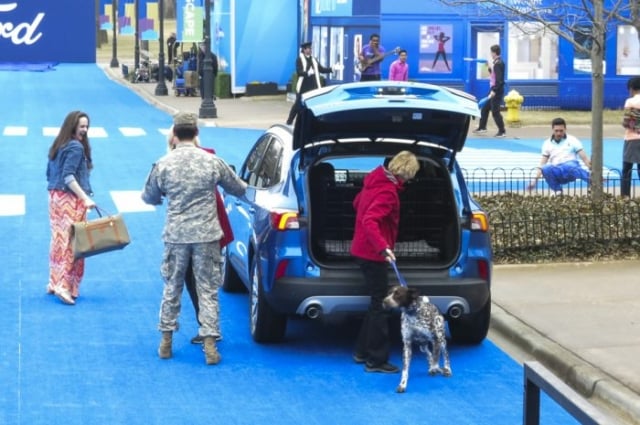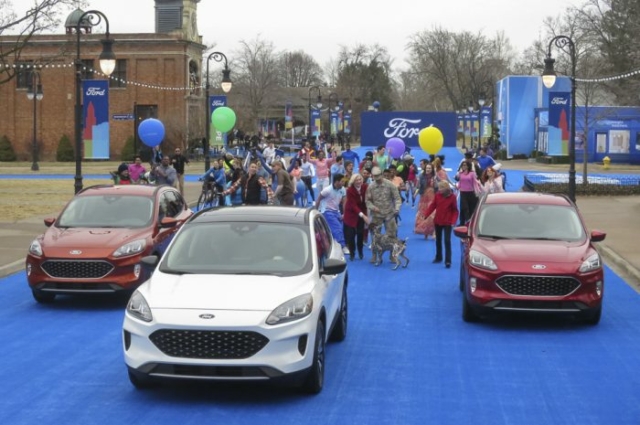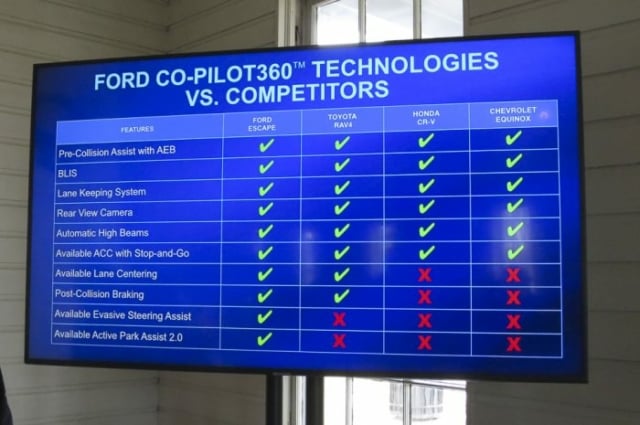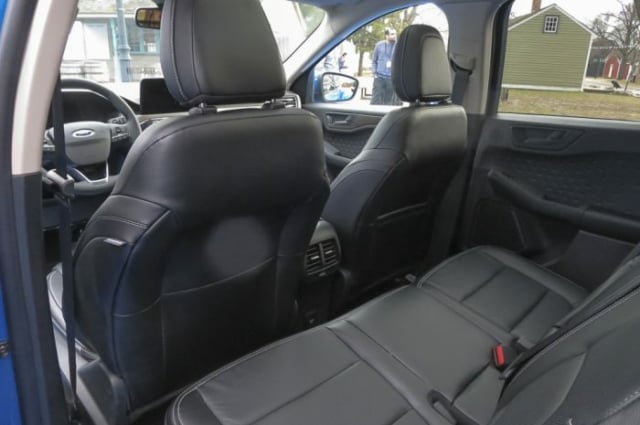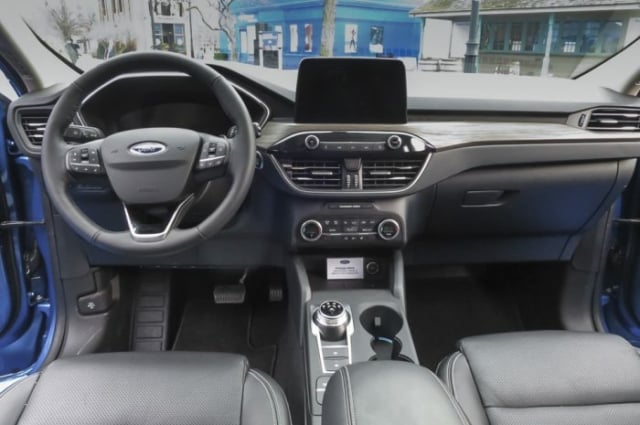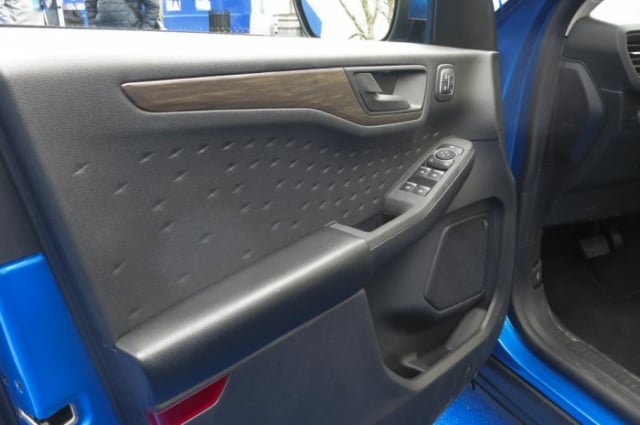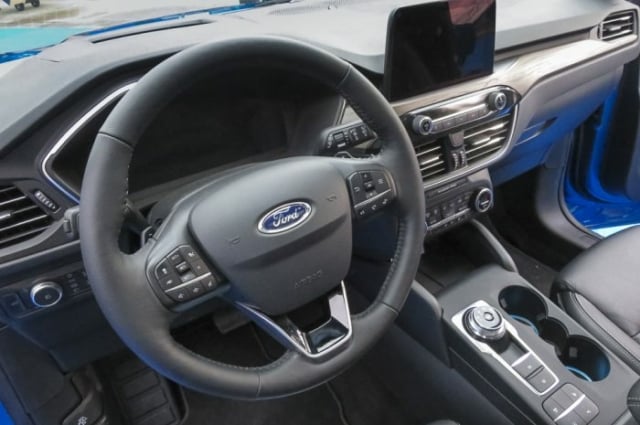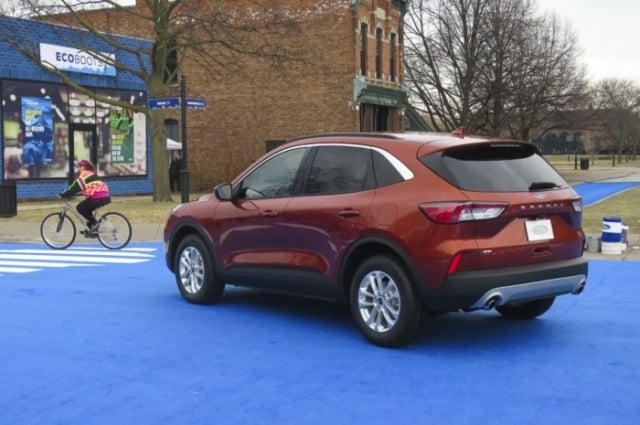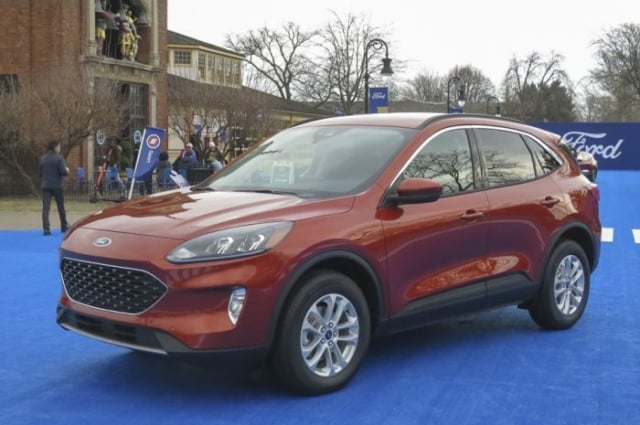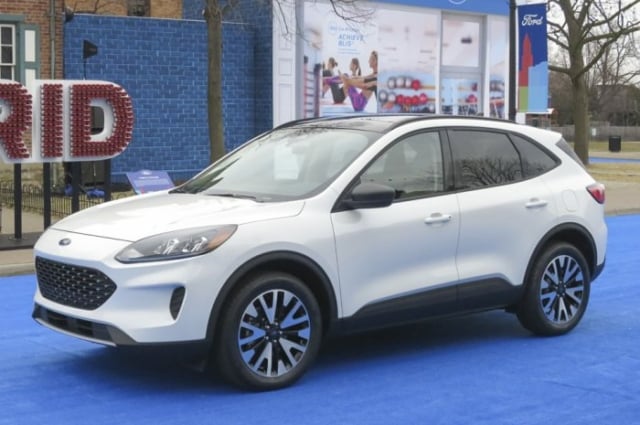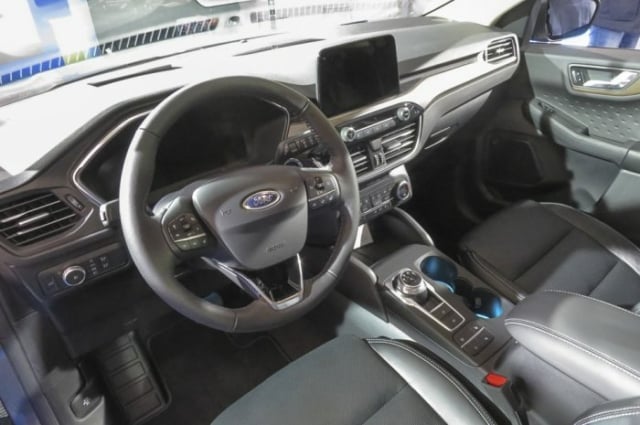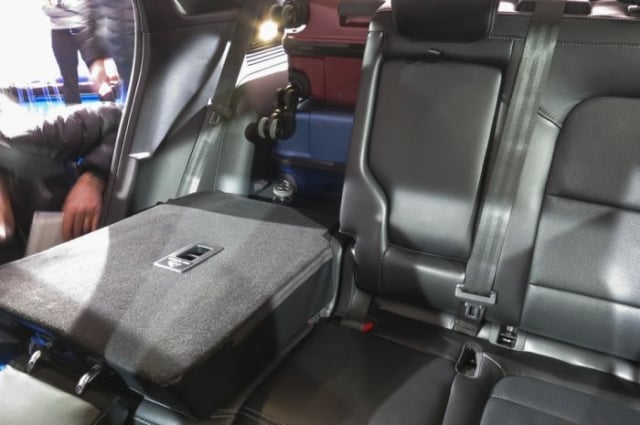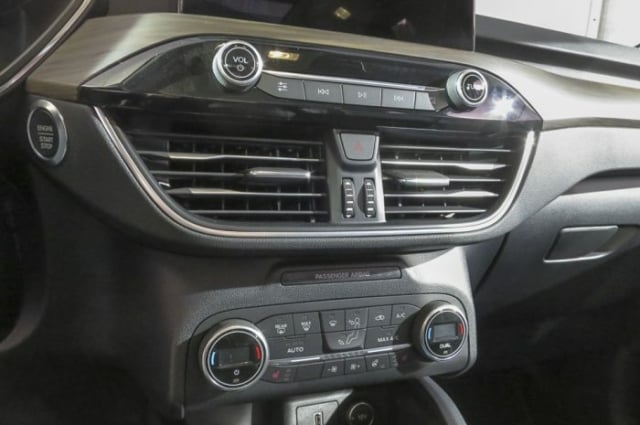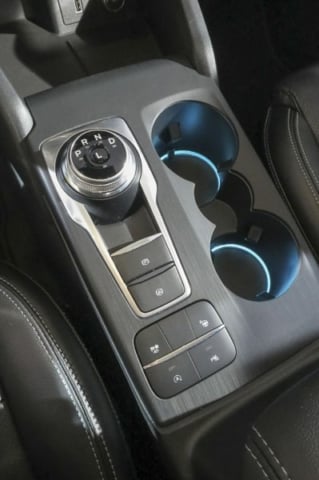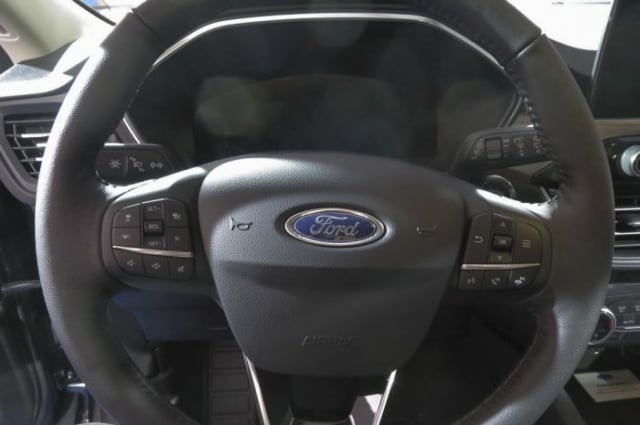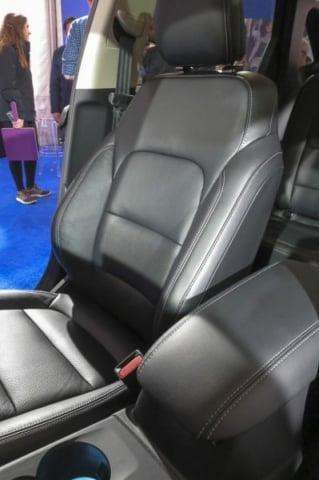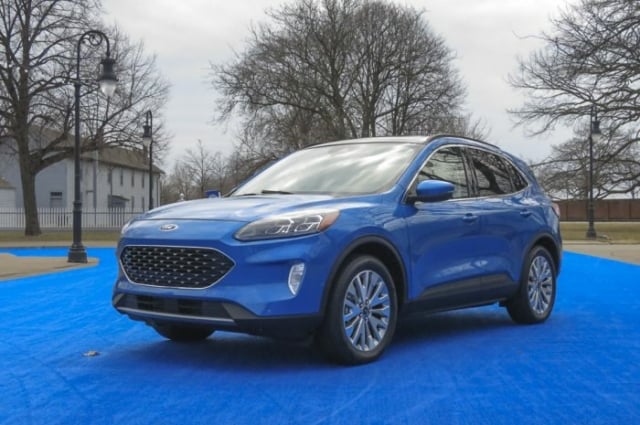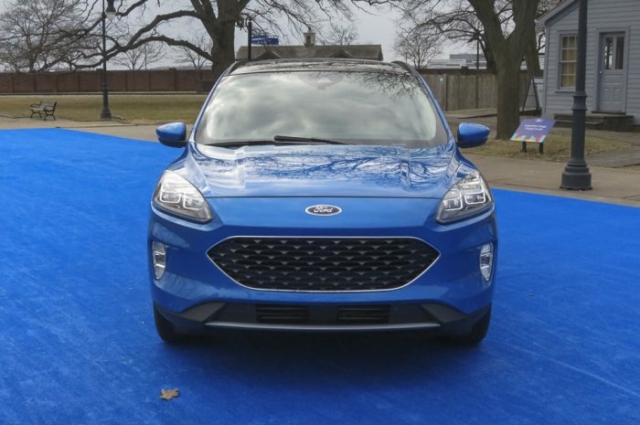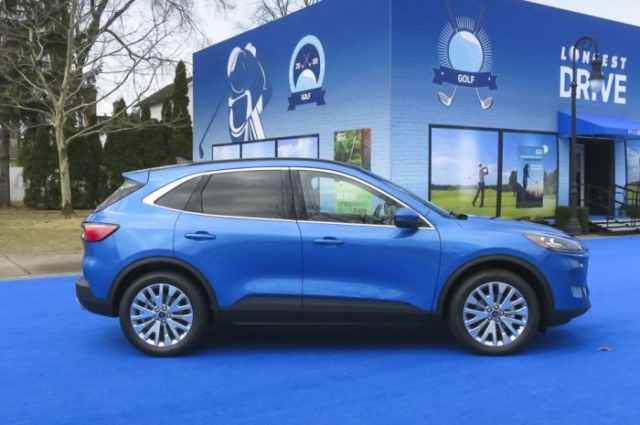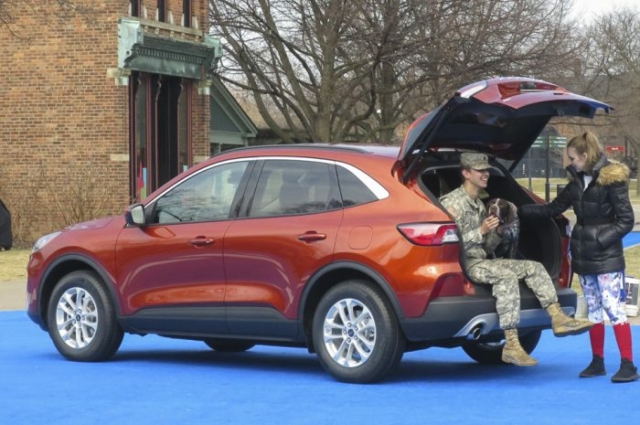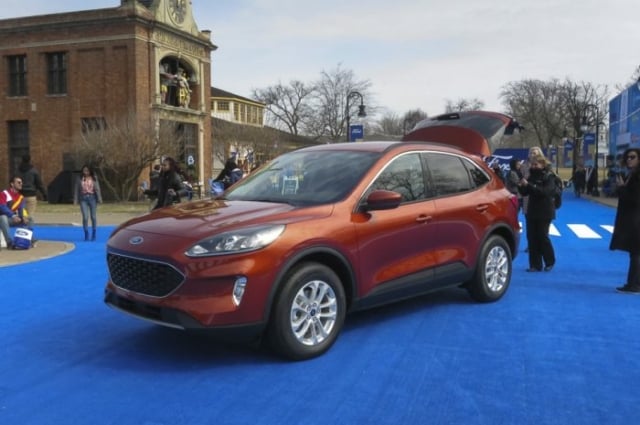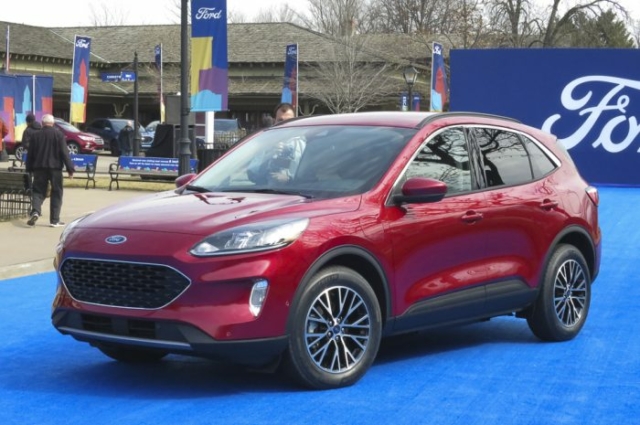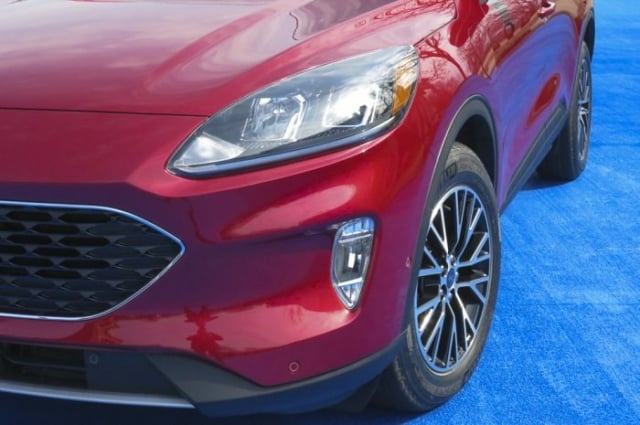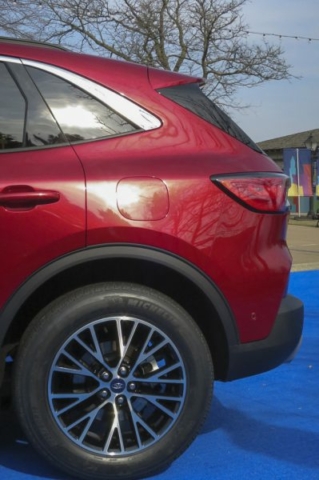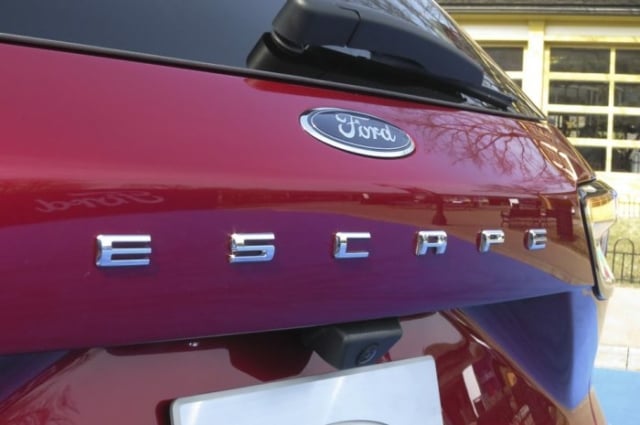Louisville, KY – With the withdrawal of its mainstream car range from the US and Canada, Ford has been busy refreshing its SUV lineup with new versions of the Expedition, Edge, Explorer and now the Escape.
When the first Ford Escape was launched in 2000, it had just six rivals in its market; that figure will likely hit 30 by 2022. Compact SUVs are big business – pickups aside, the segment is the biggest in North America and the fastest growing, too.
The New Ford Escape: Introduction & Price
Ford’s new rival to the RAV4, CR-V (which also gets a Hybrid for 2020), Rogue and the rest will be available in four trim levels in Canada (S, SE, SEL and Titanium). The US also gets an SE Sport. There are also three engines – 1.5-litre and 2-litre EcoBoost units, and a 2.5-litre Hybrid – and the choice of FWD or AWD.
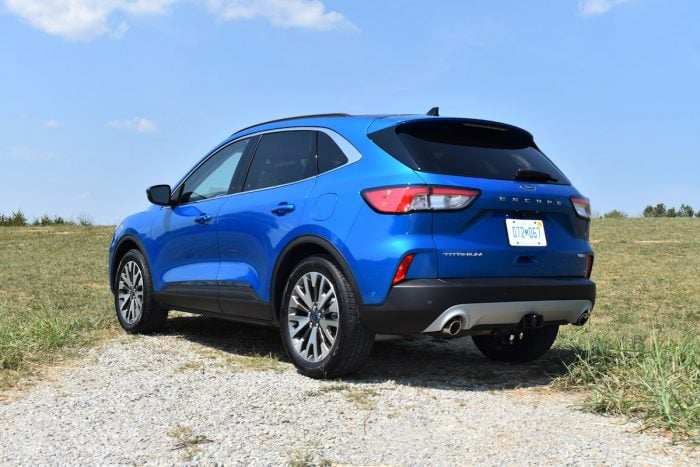
It is not the work of a moment to detail all of the drivetrain and trim level combinations, particularly as they differ for the US and Canadian markets. Important to note however is that in Canada, the Hybrid is Titanium-only whereas the US also gets an SE Sport Hybrid trim. FWD is the norm across the range and the same, optional AWD system is available on all models, Hybrid included.
In Canada, prices start at C$28,549 for the 1.5-litre FWD S and rise to C$40,049 for the 2-litre AWD Titanium. For the US, the price range is US$24,885 (S) to US$33,400 (Titanium).
Back in April, we got a First Look at the new Escape and all the new changes for 2020 – check out the feature below:
Exterior styling
The new Escape is 200 lb (91kg) lighter than the vehicle it replaces, but also longer, wider and lower, with a more car-like appearance. Ford says it sought to draw the balance between attracting new buyers from cars – the next Focus will not be sold in North America, remember – and satisfying its traditional SUV customer base. It’s an attractive look, perhaps closer to the Mazda CX-5 than other rivals, and an entirely different approach to that taken by the angular RAV4.
The more car-like silhouette has a lower beltline and thinner A-pillars that make strategic use of high-strength steel, both measures to improve visibility. The big-selling RAV4 and CR-V are more upright-looking, but then their makers still have the Corolla and Civic to capture sedan-loving customers…
Interior design
The Escape’s all-new underpinnings – it’s the first Ford to ride on the new C2 platform – have unlocked more interior space. Head, leg, knee, shoulder and hip room are all increased from the previous generation, front and rear.
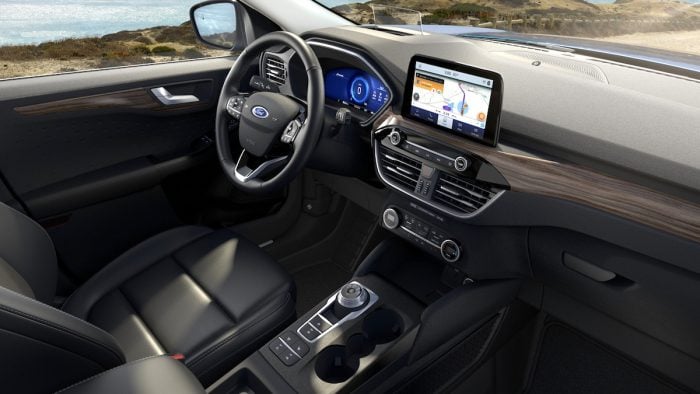
Better still is the addition of a sliding rear bench. Standard across the range, it provides 6in of flexibility to maximize passenger or cargo space. With the seats up, the latter is increased by about 10% over the outgoing model, even if overall cargo space behind the first row is slightly down. Note that Hybrid models have about 10% less cargo space than regular gasoline Escapes.
At the car’s North American launch near the assembly plant in Louisville, Kentucky, Ford wasn’t shy in letting us know that the Escape now has more second-row legroom than a Suburban. We had a play with the options and found that it was possible as a six-footer to sit comfortably behind a six-foot driver, even with the rear seat in its furthest-forward position.

The seating position isn’t especially high for an SUV and the seats are very comfortable, right across the range. We were particular fans of the Titanium’s leather seats, which are perforated as one of a number of measures, inside and out, to reduce cabin noise. The materials used for the interior trim are mostly about average for the segment, but we weren’t keen on the oddly patterned and slightly cheap-feeling door trim.
The dashboard design is smart and ergonomically sound, without raising the bar in the design stakes. The obligatory central touchscreen is 8in in diameter and can be paired on the Titanium with a configurable 12.3in digital instrument cluster. One of the latter’s tasks is to communicate the Hybrid’s current source of propulsion and the electrical energy’s share of the total distance traveled. It does this in a clear and gimmick-free way, which we liked very much. A head-up display is optional.
Running changes early in 2020 will add wireless charging and increase the number of USB sockets from two to four.
Engine options and towing
The Escape comes with two EcoBoost gasoline turbo engine options. The 1.5-litre three-cylinder makes 181 HP and 190 lb-ft of torque, the 2-litre 250 HP and 280 lb-ft. We warmed to the characterful three-pot with its distinctive thrum. Thanks in part to operating on two cylinders at low loads, the motor offers 20% better fuel economy than its predecessor without seeming to miss the 2-litre’s extra power, at least without a full load on board. It chugs a little at low rpm, but mostly the 8-speed transmission keeps things smooth.
You’ll want the 2-litre if you plan on towing seriously with the Escape, however, as in conjunction with AWD it’ll handle 3,500 lb to the 1.5’s 2,000 lb. The Hybrid manages 1,500 lb, the first time an Escape Hybrid has been deemed suitable to tow thanks to much improved cooling of the new, fourth-generation power split hybrid system and underfloor battery pack, which is now liquid cooled.
Thanks in part to operating on two cylinders at low loads, the motor offers 20% better fuel economy than its predecessor without seeming to miss the 2-litre’s extra power, at least without a full load on board.
We liked the Escape Hybrid’s 200-HP powertrain best of all. The sophisticated, fully automated control system – there’s no ‘EV’ button – enabled us to spend 40-50% of our time driving under electric power, improving our average fuel economy to between 4.7-5.9L/100km (40-50mpg), depending on the terrain, without resorting to a full-on, fuel-saving driving style.
The Atkinson-cycle 2.5-litre gas engine in the hybrid system slips in and out of use unobtrusively and has a more appealing note than the 2-litre when under load. The same combustion engine will feature in the Plug-In Hybrid that will provide a fourth powertrain option when it joins the 2020 Escape lineup next spring. That’ll have 14.4kWh of energy storage, compared to the regular Hybrid’s 1.1kWh, for a projected range of at least 48km (30 miles).

Fuel economy
Ford hasn’t released official economy numbers for the Hybrid yet, saying only that it wants to improve by 50% on the outgoing 1.5-litre’s combined 9.1L/100km (26mpg). We think that the Escape’s mainly urban customers should easily manage at least 5.9L/100km (40mpg) in everyday driving.
More importantly, the published figures should be more easily achievable than in a turbocharged Escape, based on our launch drives and previous experience of real-world EcoBoost use. For the record, the official combined consumption figures on the updated turbo engines are 7.8L/100km (30mpg) for the 1.5-litre with FWD, rising to 9.1L/100km (26mpg) for the 2.litre with AWD.
Safety technology
With the likes of Toyota, Subaru and Nissan now offering driver assistance systems as a matter of course, it’s no surprise that all Escapes come as standard with Ford’s CoPilot360 suite of blind-spot information system, automated emergency braking and lane-keeping assist.
Additional technologies such as adaptive cruise control and what’s said to be a class-exclusive evasive steering assist system are available further up the range, as is lane centring.
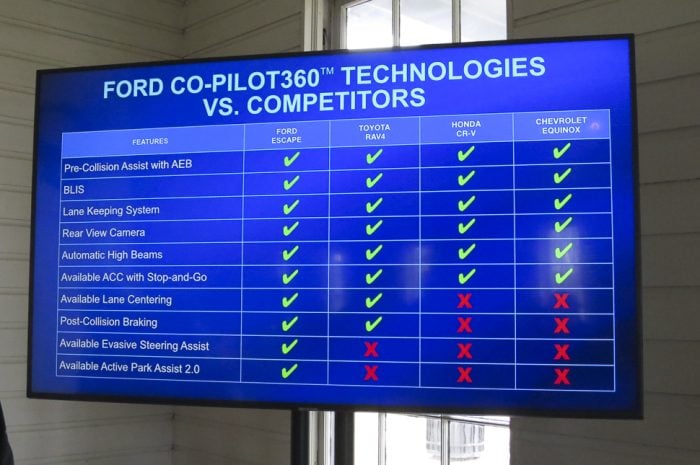
Important as they are, the technologies that involve steering intervention can compromise steering feel. That phenomenon isn’t limited to Fords but having established a reputation over two decades as the yardstick for good steering feel, the Blue Oval has more to lose than most manufacturers. The two cars that we drove without lane centring felt nicer in this regard than the one that did.
Driving impressions
Ford has worked hard to improve the on-road refinement of this new Escape, including isolating the rear subframe to reduce noise and vibration transfer from road to cabin, and to enable it to better tune the suspension’s balance of vertical suppleness and lateral stiffness.
Based on our initial drives it has largely succeeded in creating a quiet ride, with some caveats. The first is that the Titanium’s combination of 19in wheels and Bridgestone Ecopia tires creates both more road noise and a harder thud through potholes and over sharp bumps than we’d have liked. The 17in wheels we tried – matched this time with Michelin tires with taller sidewalls – did a better job.
…like so many smaller Fords before it – is at speed on country roads, where the body control is excellent and the suspension soaks up lumpy, broken shoulders like they barely exist.
Where the Escape shines – like so many smaller Fords before it – is at speed on country roads, where the body control is excellent and the suspension soaks up lumpy, broken shoulders like they barely exist. This is a very European quality, however, and we’d have traded some of it for more plushness over the harder bumps and poor surfaces that are more typical of urban roads in the US and Canada.
Handling-wise, the Escape does nothing wrong but perhaps lacks that immediacy of response and engagement that, once again, we’ve come to expect from compact Fords. The aforementioned driver assistance systems’ effect on the steering may have something to do with it, but whatever the reason, our initial impression was that this isn’t a car that will establish a clear advantage over its rivals in driving dynamics. A proper assessment will have to wait until we can test it on the same roads as its rivals.
Naturally there’s a Sport mode available at the touch of a button but this is a family SUV that drives perfectly well in the default mode.
Takeaway
Ford knows that without a Focus in the lineup, the 2020 Escape must do more than appeal to the traditional SUV crowd. Several times at the launch event, we were told that a particular feature had been incorporated to meet the expectations of former sedan buyers. Keywords for the new model’s development were apparently ‘chic, modern, athletic and nimble’. Sounds more like a car than an SUV, doesn’t it?
The 2020 Escape looks like a stronger contender than its predecessor. The sliding rear bench is an excellent addition and it now has the technology to challenge newer rivals, but for us, the Hybrid could yet prove to be the Escape’s trump card. The new powertrain is beautifully executed and in our admittedly limited test, proved to be spectacularly economical. With a promised 885km (550-mile) total range and competitive pricing, Ford could have a winner on its hands.
| PROS: | CONS: |
| – Terrific Hybrid model | – Spec-dependent ride quality and steering feel |
| – Car-like styling | – Occasionally cheap-feeling trim material |
| – Flexibility of sliding rear bench | – Real-world EcoBoost economy doesn’t always match the claimed figure |

